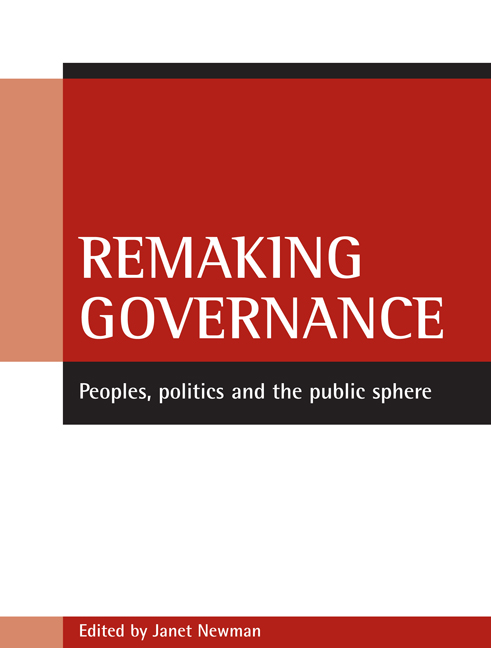Book contents
- Frontmatter
- Contents
- List of tables and figures
- Acknowledgements
- Notes on contributors
- Introduction
- one Reconstituting Europe: governing a European people?
- two Governance and the constitution of a European social
- three Remaking European governance: transition, accession and integration
- four Regendering governance
- five Welfare governance and the remaking of citizenship
- six Participative governance and the remaking of the public sphere
- seven Promoting democratic governance through partnerships?
- eight Among everyday makers and expert citizens
- nine Governance and the transformation of political representation
- Conclusion
- Index
two - Governance and the constitution of a European social
Published online by Cambridge University Press: 18 January 2022
- Frontmatter
- Contents
- List of tables and figures
- Acknowledgements
- Notes on contributors
- Introduction
- one Reconstituting Europe: governing a European people?
- two Governance and the constitution of a European social
- three Remaking European governance: transition, accession and integration
- four Regendering governance
- five Welfare governance and the remaking of citizenship
- six Participative governance and the remaking of the public sphere
- seven Promoting democratic governance through partnerships?
- eight Among everyday makers and expert citizens
- nine Governance and the transformation of political representation
- Conclusion
- Index
Summary
Introduction
The past 10 to 15 years have seen a transformation in the European Union's (EU) engagement with social policy issues – from the Social Protocol in the Maastricht Treaty to the initiation of a new mode of policymaking, the Open Method of Coordination (OMC). This is designed to allow the EU to engage with social policy issues ranging from employment services to immigration, social cohesion and pension systems. Originally used to manage the process of introducing the single currency and creating the Eurozone (de la Porte and Pochet, 2002a), it appeared to offer a solution to the EU's frozen social policy landscape. The OMC seemed to politicians and scholars alike to offer a new way of overcoming the impasse of Member States’ intransigent defence of their existing welfare state arrangements and their resistance to joint measures which would involve them in perhaps unpalatable legal and/or financial commitments. This chapter begins by outlining the ways in which OMC functions as a policymaking process. However, the chapter is less concerned with the process itself than with the interaction of the governance processes and the formal policy goals, and how this interaction delineates the limits of the social in social policy governance within the EU.
While each OMC has particular characteristics, the broad principles remain the same across all policy areas. The common social and social policy problems faced by all EU Member States would be dealt with by adopting common policy goals and through learning from each other regarding the best policy solutions to meet these goals, through benchmarking and comparison using common indicators, and in the European Employment Strategy (EES) common targets. This means that broad agreement on policy goals could be gained, without imposing a uniform ‘Euro-solution’ onto all Member States for every policy area. The Member States would debate, negotiate and agree these goals at regular meetings, but crucially, they could choose to use and implement whichever means were politically, economically or socially appropriate to the circumstances of their (welfare) state in order to meet those goals. The basic policy mechanisms are the production of regular (annual or biannual) National Action Plans (NAPs) by Member States, which report on how policy goals are being met, followed by a multilateral surveillance of these reports by all the Member States, and a joint report on the NAPs produced by the European Commission.
- Type
- Chapter
- Information
- Remaking GovernancePeoples, Politics and the Public Sphere, pp. 39 - 58Publisher: Bristol University PressPrint publication year: 2005
- 1
- Cited by



